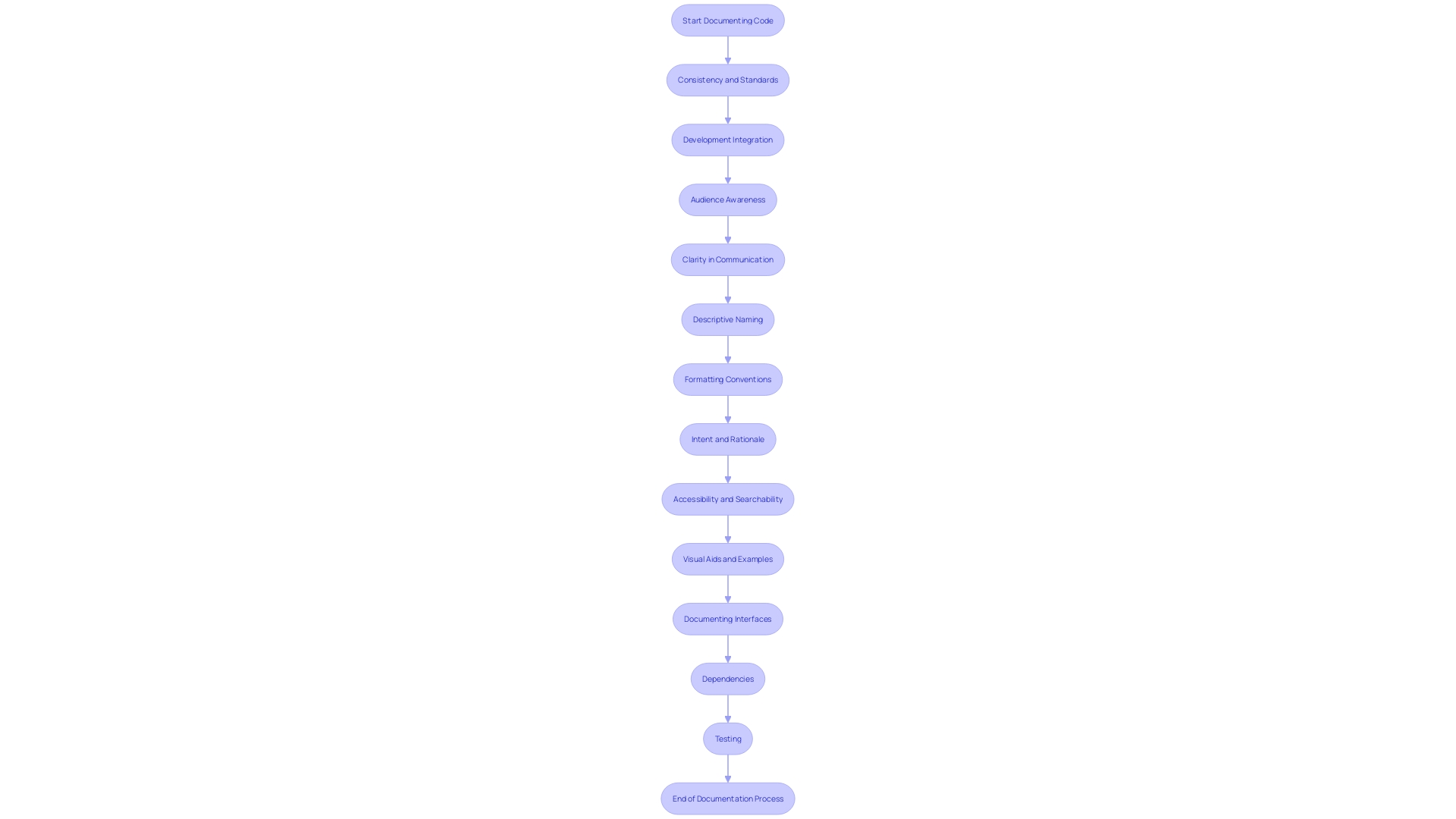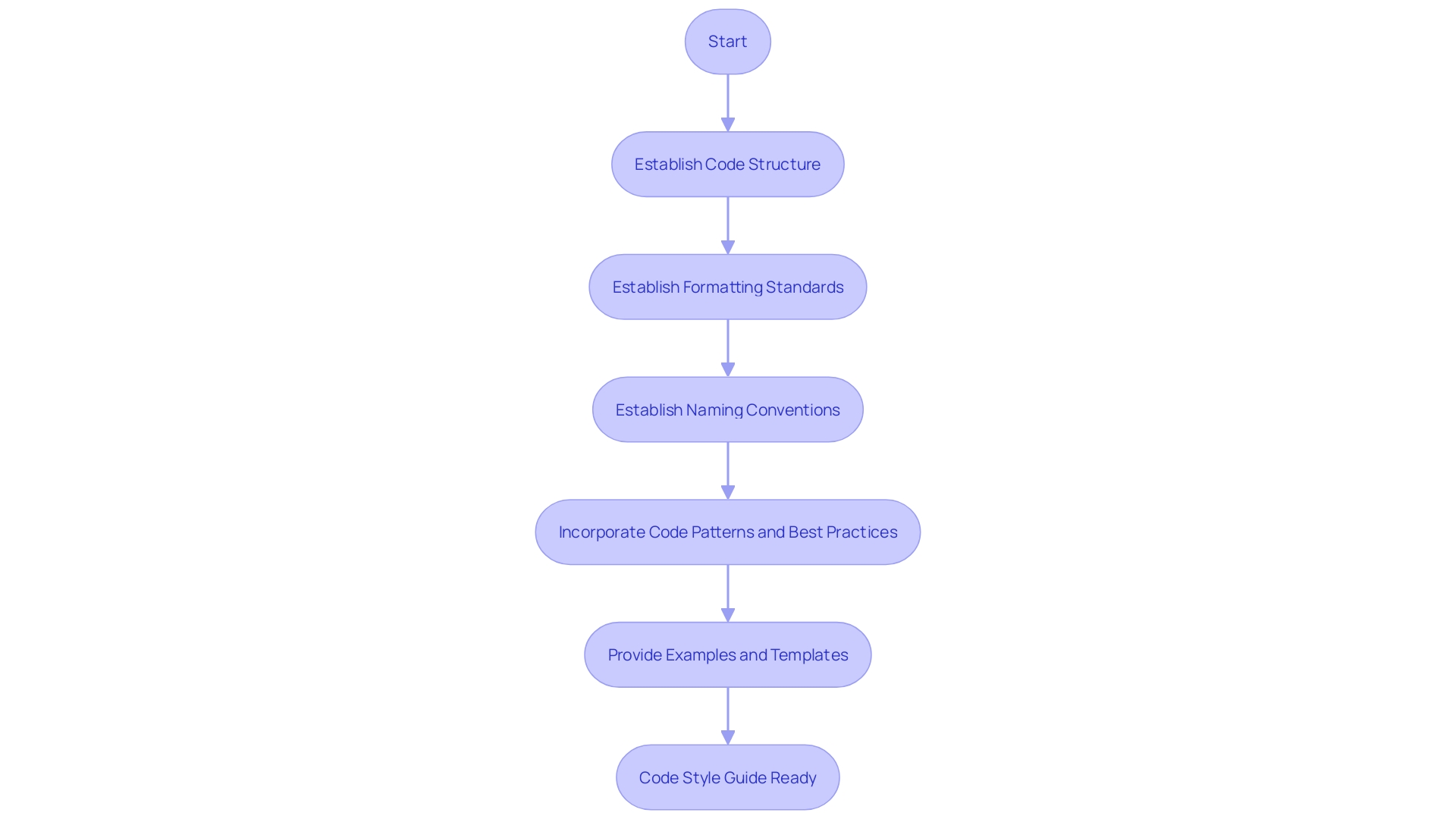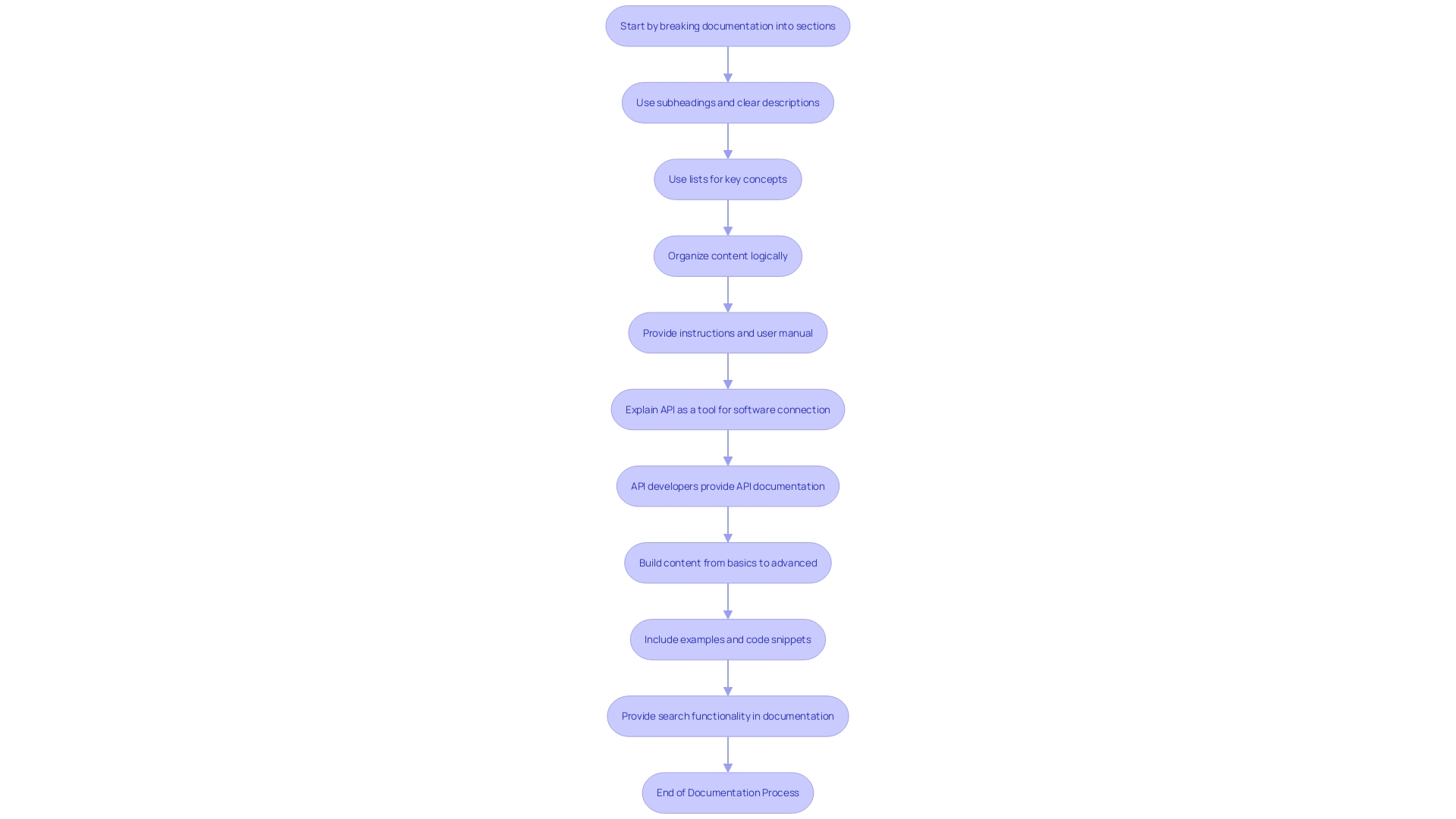Introduction
In the ever-evolving landscape of software development, clear and comprehensive code documentation is not just a nicety—it's an absolute necessity. Documentation serves as the blueprint for understanding a codebase's intricacies, its functionalities, and interdependencies. It enhances code readability, fosters collaboration, and reduces the likelihood of costly errors.
Software documentation is the cornerstone of any project, providing vital information to developers, administrators, and stakeholders. In a world where digital transformation is accelerating, and consumer demands are ever-shifting, the meticulous process of documenting code cannot be understated—it is the bedrock upon which software innovation and reliability are built. In this article, we will explore the best practices for writing code documentation, creating a style guide, and utilizing tools and templates to achieve maximum efficiency and productivity.
Why Prioritize Code Documentation in Software Development
In the ever-evolving landscape of software development, clear and comprehensive documentation of the program is not just a nicetyâit's an absolute necessity. Take M&T Bank, for example, a banking institution steeped in 165 years of history. As they embraced the digital revolution, they recognized the pivotal role of Clean Code standards to ensure their software's maintainability, security, and efficiency. Likewise, written records function as the blueprint for comprehending a codebase's complexities, its functionalities, and interdependencies.
Documentation is more than a mere afterthought; it is a strategic tool that enhances program readability, fosters collaboration, and reduces the likelihood of costly errors. As Don Kaluarachchi expresses, the core of documenting lies in its capability to clarify and elucidateâtransforming code from a cryptic puzzle to an understandable narrative. This is paramount in an industry where a single oversight can precipitate security breaches and erode user trust.
To that end, software documentation is the cornerstone of any project. It is a comprehensive guide that provides developers, administrators, and stakeholders with vital information. This written or visual material outlines the product's functionalities and usage, thereby underpinning the development process, setting expectations, and ensuring collective understanding. In a world where digital transformation is accelerating, and consumer demands are ever-shifting, the meticulous process of documenting programming cannot be understated—it is, as the statistics suggest, the bedrock upon which software innovation and reliability are built.

Best Practices for Writing Code Documentation
'Crafting code records is an art that relies on clarity and utility.'. For developers seeking to create valuable documentation, here are refined strategies:
-
Consistency and Standards: Your documentation's effectiveness is amplified by its consistency. Follow standardized templates and formatting, and use conventional naming to promote a consistent style of writing.
-
Development Integration: Instead of treating it as an afterthought, incorporate the process of documenting into the development lifecycle. This ensures it mirrors the latest code iterations, enhancing its relevance.
-
Audience Awareness: Customize the content to your target readers, ensuring it's easily understandable by both technical and non-technical individuals. Strive to strike a balance between comprehensiveness and simplicity.
-
Clarity in Communication: Employ clear, jargon-free language to make your documentation universally understandable.
-
Descriptive Naming: Choose meaningful names for elements of the program to clarify their purpose and functionality.
-
Formatting Conventions: Embrace consistent formatting, such as indentation and spacing, to improve readability and aesthetic appeal.
-
Intent and Rationale: Document the 'why' behind your code, explaining intent and design choices to aid future developers in comprehension and maintenance.
-
Accessibility and Searchability: Ensure your documentation is easily discoverable and navigable. Utilize tools that facilitate accessibility and efficient searching.
-
Visual Aids and Examples: Enhance comprehension of complex concepts with diagrams, flowcharts, and snippets, providing a visual context.
-
Interfaces, Dependencies, and Testing: Clearly document interfaces, dependencies, and testing strategies to elucidate interactions and ensure thorough testing and integration.
By adopting these practices, team members can create a clear and comprehensive guide for all.

Creating a Style Guide for Code Documentation
A comprehensive style guide for code is a blueprint for achieving uniformity and clarity across a project's codebase. It is crucial in establishing a standardized approach to documenting, which is especially beneficial when multiple developers contribute to the same project. Here's what to focus on when crafting such a guide:
-
Establish a distinct structure for your written material: Initiate with a well-defined layout that partitions the information into segments, commencing with an introduction, followed by instances of usage, API references, and concluding with a guide for resolving issues. Each section should fulfill a clear objective, ensuring that the material is user-friendly and easily navigable.
-
Establishing Formatting Standards: Consistent formatting for samples, comments, and headings is not only about aesthetics; it improves readability. Clear formatting guidelines ensure documentation is accessible and comprehensible to all team members.
-
Establish Naming Conventions: Consistency in naming variables, functions, and classes avoids confusion and facilitates easier codebase navigation. A well-documented naming convention aids in maintaining and understanding the code, long after it's written.
-
Incorporate Code Patterns and Best Practices: Give insights into the preferred coding patterns and best practices. This section should act as a guide for programmers, directing them away from common errors and towards more efficient coding practices.
-
Present concrete illustrations and pre-made templates for various scenarios, such as outlining functions or classes. This practical approach speeds up the process of recording information and offers a dependable point of reference for developers.
Essentially, a style guide is not only about maintaining consistency; it's about creating an environment where programming instructions are not just written for machines but also for humans to read, comprehend, and effectively manage.

Using Tools and Templates for Code Documentation
Utilizing the potential of advanced instruments can greatly speed up the procedure of generating comprehensive and uniform code records. These resources are essential in creating automated, consistent records that meet quality standards.
-
API Documentation Tools: Streamline your process of documenting APIs with resources like Swagger, Javadoc, and Sphinx. These applications utilize code annotations and comments to automatically generate structured API guidance, providing a clear and navigable interface that clarifies the codebase.
-
Markdown Documentation Tools: For those favoring the simplicity of Markdown, tools such as MkDocs and GitBook are ideal. They allow programmers to create written content using a straightforward markup language, enhanced by templates and themes for producing high-quality written material.
-
Templates: Templates provided by programming languages and frameworks are invaluable as starting points for creating written materials. These templates comprise predefined sections and instructions, aiding developers in documenting code elements to foster uniformity and clarity.
-
Style Guide Generators: Setting standards for documenting is essential, and resources like Documentarian and ReadMe.io are leading the way in creating style guides for this objective. These platforms provide user-friendly interfaces to establish formatting rules, naming conventions, and other principles related to records.
Utilizing these resources and templates not only saves time but also guarantees that the paperwork created is of excellent quality and uniform throughout. The right tools can transform the often arduous task of documentation into a more manageable and efficient process.

Conclusion
In conclusion, clear and comprehensive code documentation is essential in the ever-evolving landscape of software development. It serves as the blueprint for understanding a codebase's intricacies, functionalities, and interdependencies. Documentation enhances code readability, fosters collaboration, and reduces the likelihood of costly errors.
It is the cornerstone of any project, providing vital information to developers, administrators, and stakeholders.
To achieve maximum efficiency and productivity in code documentation, developers should follow best practices such as maintaining consistency and standards, integrating documentation into the development lifecycle, tailoring documentation to the audience, employing clear and jargon-free language, and utilizing visual aids and examples. Creating a style guide for code documentation is crucial in achieving uniformity and clarity across a project's codebase. The style guide should outline a clear documentation structure, set formatting standards, establish naming conventions, incorporate code patterns and best practices, and provide practical examples and templates.
Harnessing the power of innovative documentation tools can significantly expedite the process of creating thorough and consistent code documentation. API documentation tools like Swagger, Javadoc, and Sphinx streamline the API documentation process. Markdown documentation tools like MkDocs and GitBook offer simplicity and flexibility in writing documentation.
Documentation templates and style guide generators provide predefined sections, formatting rules, and naming conventions to ensure high-quality and consistent documentation.
By following these best practices and utilizing the right tools and templates, developers can achieve maximum efficiency and productivity in code documentation. This results in clear and comprehensive documentation that enhances collaboration, reduces errors, and fosters software innovation and reliability.
Start maximizing your efficiency and productivity in code documentation today!
Frequently Asked Questions
Why is code documentation important in software development?
Code documentation is essential because it enhances program readability, fosters collaboration, and reduces the likelihood of costly errors. It serves as a blueprint for understanding a codebase's complexities and functionalities, which is crucial for maintainability, security, and efficiency.
How does M&T Bank relate to the importance of code documentation?
M&T Bank, with its long history, recognized the need for clear code documentation as it transitioned into the digital age. They adopted Clean Code standards to ensure their software's maintainability and security, highlighting the strategic role of documentation in software development.
What are some best practices for writing effective code documentation?
Key best practices include: Consistency and Standards, Development Integration, Audience Awareness, Clarity in Communication, Descriptive Naming, Formatting Conventions, Intent and Rationale, Accessibility and Searchability, Visual Aids and Examples, and Interfaces, Dependencies, and Testing.
What is a style guide for code documentation, and why is it important?
A style guide is a blueprint that establishes uniformity and clarity across a project's codebase. It helps maintain a standardized approach to documentation, making it especially useful when multiple developers contribute to the same project.
What should be included in a code documentation style guide?
A style guide should include a defined structure for written material, formatting standards for samples, comments, and headings, naming conventions for variables, functions, and classes, insights into preferred coding patterns and best practices, and concrete illustrations and pre-made templates for documentation.
What tools and templates can assist in creating code documentation?
Several tools can enhance the documentation process, including API Documentation Tools like Swagger, Javadoc, and Sphinx; Markdown Documentation Tools like MkDocs and GitBook; Templates from programming languages and frameworks; and Style Guide Generators like Documentarian and ReadMe.io.
How do these tools improve the documentation process?
Using advanced tools and templates streamlines the creation of comprehensive and uniform code records, saving time and ensuring high-quality, consistent documentation. These resources transform the often tedious task of documentation into a more manageable and efficient process.




